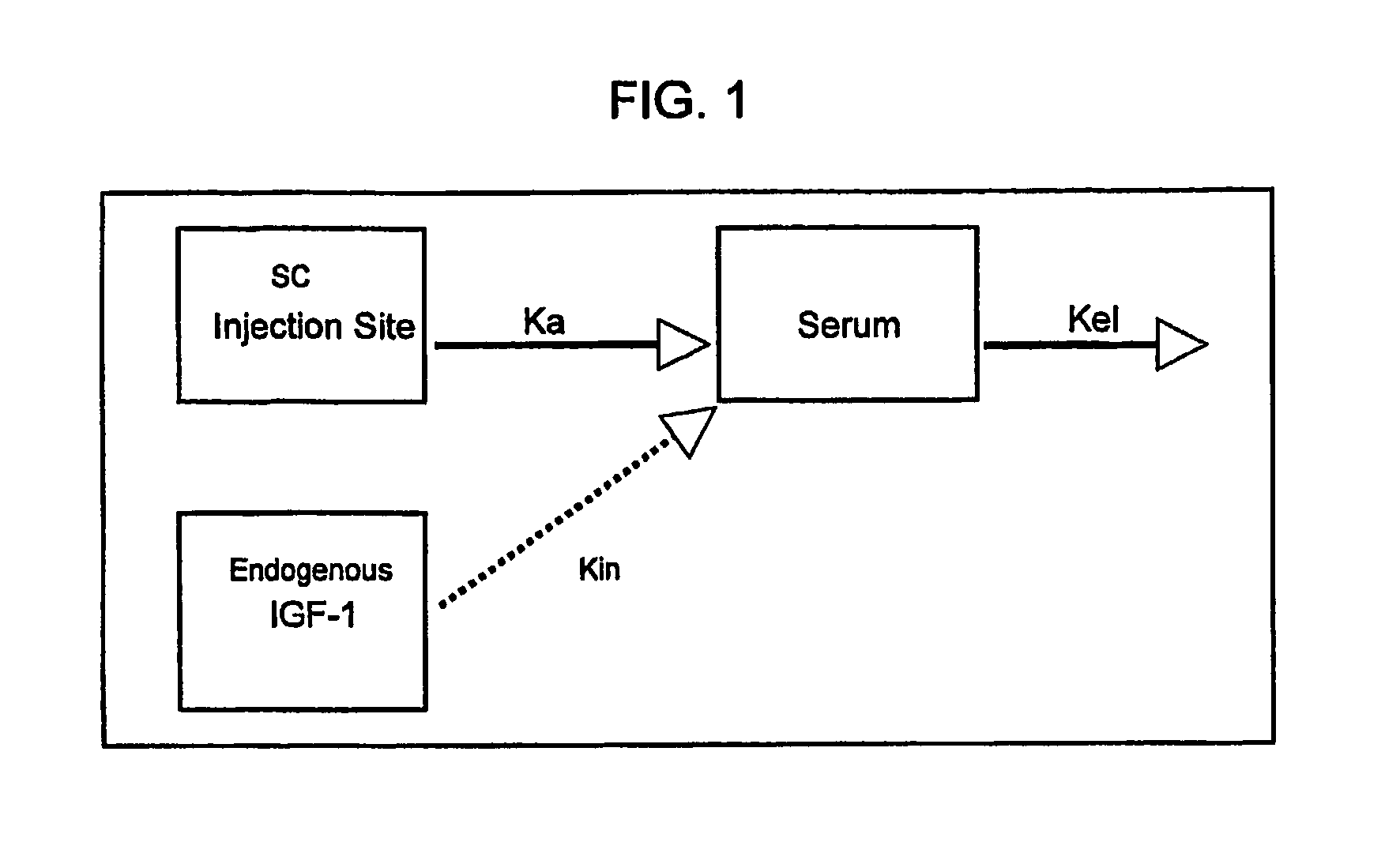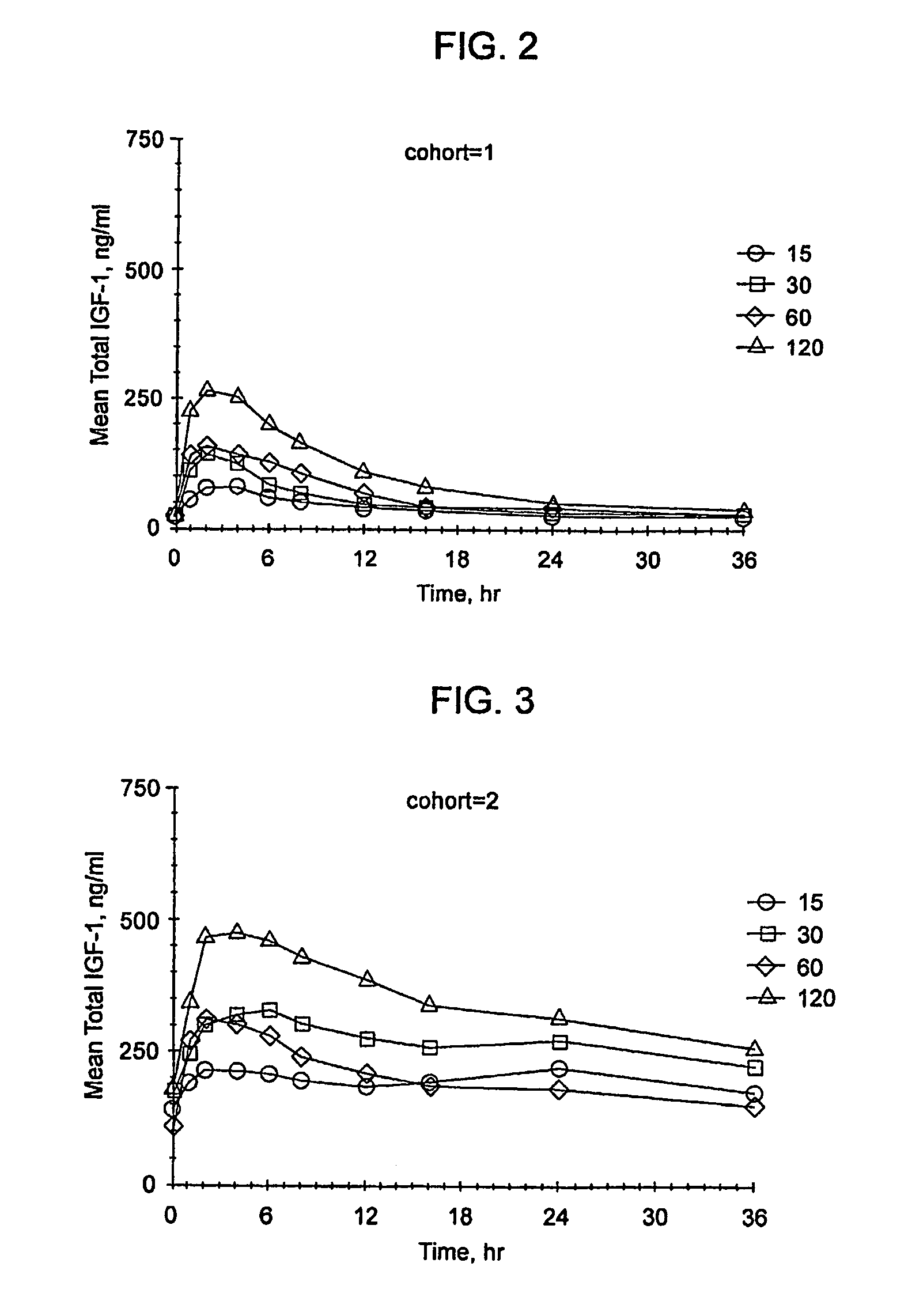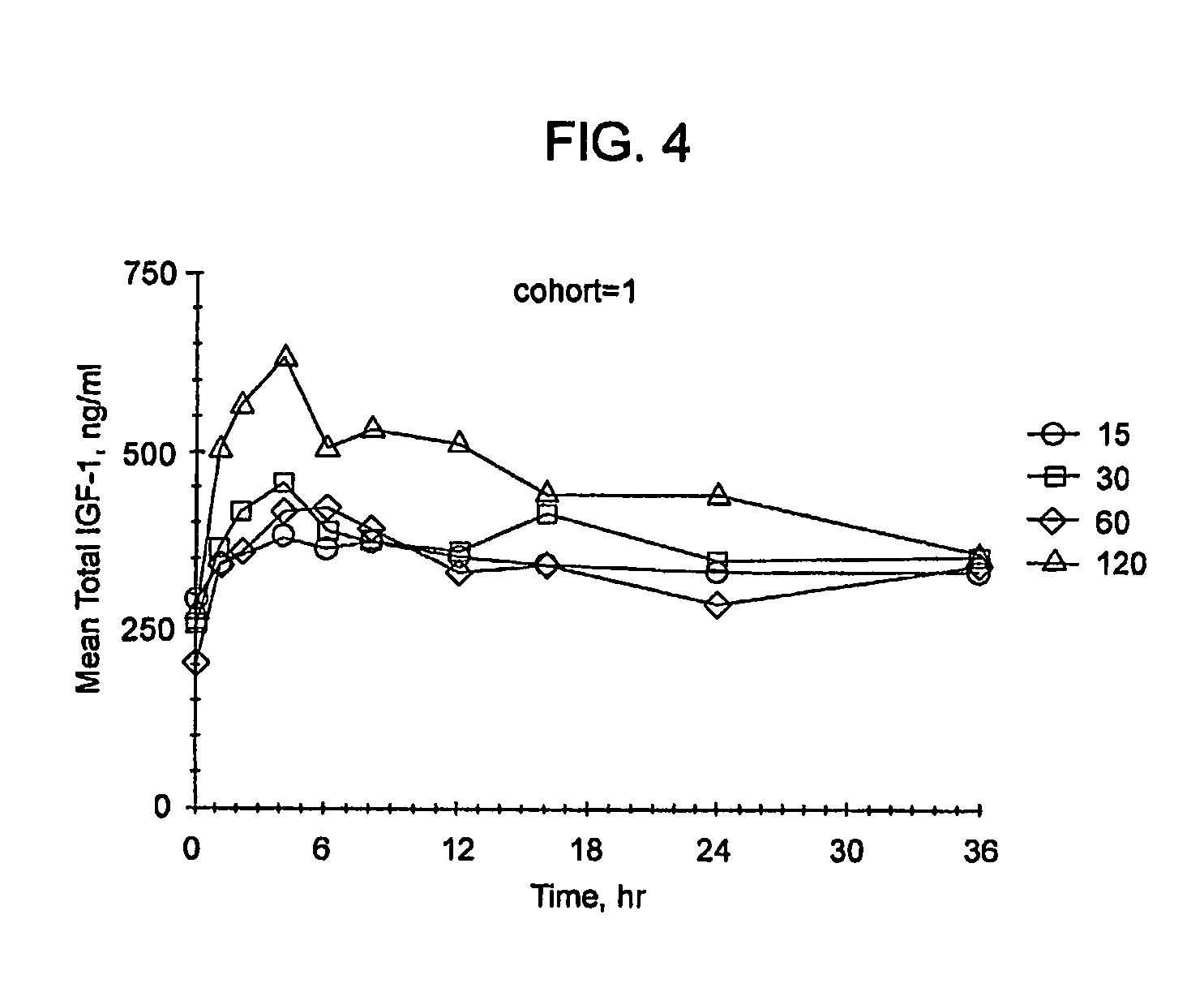Methods for treatment of insulin-like growth factor-1 deficiency
a technology of growth factor and insulin, which is applied in the field of treatment of insulinlike growth factor1 deficiency, can solve the problems of children with short stature, possible treatment continues to pose a dilemma for specialists, and the optimal delivery method for igf-1 has not been developed
- Summary
- Abstract
- Description
- Claims
- Application Information
AI Technical Summary
Benefits of technology
Problems solved by technology
Method used
Image
Examples
example 1
A Pharmacokinetic Study to Assess the Parameters Controlling the Clearance of IGF-1 and the Dosing Requirements for Recombinant Human IGF-1 (rhIGF-1) in Patients, Especially Those with IGF-1 Deficiency (IGFD)
[0339]In children with IGFD (defined as short stature and low blood IGF-1 concentrations) physiologic replacement therapy with rhIGF-1 should correct IGF-1 concentrations to age- and gender-appropriate levels. IGFD can be caused by a lack of GH or a lack of GH action. Across the spectrum of IGFD, there is a direct correlation between serum IGF-1 and IGFBP-3 concentrations. IGFBP-3 is also inversely related to rhIGF-1 clearance (as discussed in detail below; data presented in FIG. 5A). Thus, rhIGF-1 dosing may need to be adjusted to prevailing IGFBP-3 levels. A single-dose rhIGF-1 PK study was conducted in subjects who had a wide range of IGF-1 and IGFBP-3 concentrations.
[0340]The objectives were to determine the pharmacokinetic (PK) parameters of a subcutaneous injection of reco...
example 2
Short-Term Treatment with Recombinant Human Insulin-Like Growth Factor-1 (rhIGF-1): an Open-Label, Randomized Pharmacokinetic and Pharmacodynamic Study in Subjects with IGF-1 Deficiency
[0355]The primary objective of the study was to determine the standard deviation scores (SDS) and pharmacokinetic parameters of serum IGF-1 and IGFBP-3 following three weeks of daily dosing with subcutaneous (SC) injections of rhIGF-1 in subjects with IGF-1 deficiency.
[0356]Methods: This was an open-label, randomized, parallel dose study to assess the steady-state PK / PD of IGF-1 at three SC dosing regimens following a short-term (e.g. 3 week) rhIGF-1 dosing: 40 mg / kg BID, 80 mg / kg BID or 80 mg / kg QD, on 18 IGFD subjects (i.e. IGF-1 SDS <−2.0).
[0357]The total IGF-1 SDS and IGFBP-3 over a 24-hour period at steady state were determined. The pharmacokinetic parameters of total IGF-1 were determined by a non-compartmental method based on the baseline corrected total IGF-1 concentrations at steady state: CL...
example 3
Determination of Total IGF-1 Steady-State AUC in Short-Term Treatment with Recombinant Human Insulin-Like Growth Factor-1 (rhIGF-1) in Subjects with IGF-1 Deficiency
[0368]Total IGF-1 steady-state AUC were determined from 18 subjects in the study described in Example 2 above. Predicted total IGF-1 steady-state AUC and clearance values from the PK model were compared with the observed values.
[0369]Methods: The steady-state AUC over a 24-hour period and CL / F were determined by a non-compartmental method based on the baseline corrected total IGF-1 concentrations at steady state from 18 subjects in the MS302a study described in Example 2 above.
[0370]The model predicted CL / F and the corresponding steady-state AUC values were calculated based on the population PK model derived from the single dose data in MS302 study. The IGFBP-3 value of each subject was used to predict the CL / F value and steady-state AUCss over a 24-hour period as shown in equations below.
CL / F=0.0104*(IGFBP3 / 3.0)−0.82 (...
PUM
| Property | Measurement | Unit |
|---|---|---|
| body weight | aaaaa | aaaaa |
| body weight | aaaaa | aaaaa |
| body weight | aaaaa | aaaaa |
Abstract
Description
Claims
Application Information
 Login to View More
Login to View More - R&D
- Intellectual Property
- Life Sciences
- Materials
- Tech Scout
- Unparalleled Data Quality
- Higher Quality Content
- 60% Fewer Hallucinations
Browse by: Latest US Patents, China's latest patents, Technical Efficacy Thesaurus, Application Domain, Technology Topic, Popular Technical Reports.
© 2025 PatSnap. All rights reserved.Legal|Privacy policy|Modern Slavery Act Transparency Statement|Sitemap|About US| Contact US: help@patsnap.com



